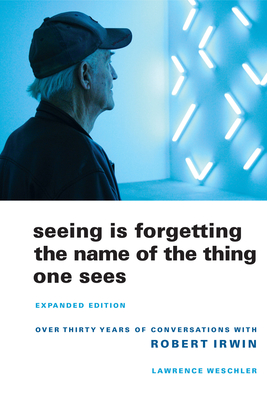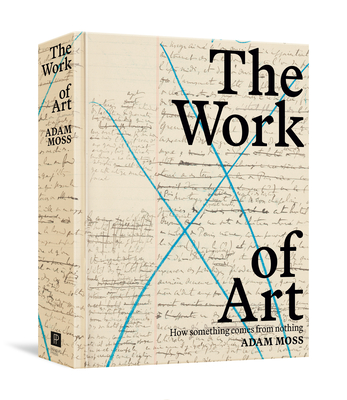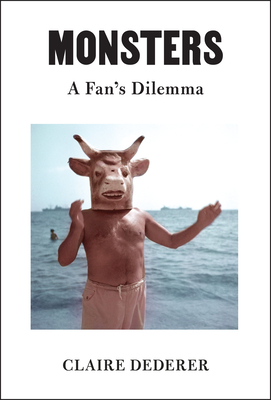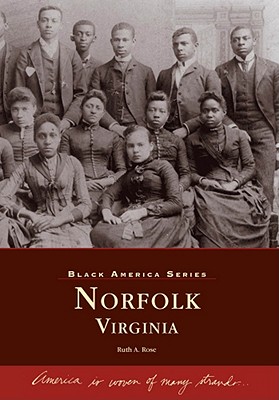
Seeing Is Forgetting the Name of the Thing One Sees: Expanded Edition
Description
When this book first appeared in 1982, it introduced readers to Robert Irwin, the Los Angeles artist "who one day got hooked on his own curiosity and decided to live it." Now expanded to include six additional chapters and twenty-four pages of color plates, Seeing Is Forgetting the Name of the Thing One Sees chronicles three decades of conversation between Lawrence Weschler and light and space master Irwin. It surveys many of Irwin's site-conditioned projects—in particular the Central Gardens at the Getty Museum (the subject of an epic battle with the site's principal architect, Richard Meier) and the design that transformed an abandoned Hudson Valley factory into Dia's new Beacon campus—enhancing what many had already considered the best book ever on an artist.
Praise for Seeing Is Forgetting the Name of the Thing One Sees: Expanded Edition
"Irwin worked through a series of styles which recapitulate a complete strand in American painting. Figuration was replaced by semi-abstraction. This was followed by Abstract Expressionism, then by color-field painting, conceptual art and land art. As each step can seem a willful rejection of complexity and richness, the reasons for the moves Irwin made must justify as well as explain. Set out in Weschler’s book (much of it is direct quotation from interviews with Irwin), they are convincing. Irwin’s story is one of aesthetic claustrophobia, of attempts to break out of the limits set by his own work."
— London Review of Books
"Irwin worked through a series of styles which recapitulate a complete strand in American painting. Figuration was replaced by semi-abstraction. This was followed by Abstract Expressionism, then by color-field painting, conceptual art and land art. As each step can seem a willful rejection of complexity and richness, the reasons for the moves Irwin made must justify as well as explain. Set out in Weschler’s book (much of it is direct quotation from interviews with Irwin), they are convincing. Irwin’s story is one of aesthetic claustrophobia, of attempts to break out of the limits set by his own work."
“Weschler’s ability to concede the book to Irwin does not just attest to his ear for the artist’s fluid, if sometimes off-key, dialogue but also confirms that retaining such oddities is often finer than anything a biographer could conjure (it is worth noting that this remarkable book was also Weschler’s first). . . . Seeing is Forgetting may not be just the best biography of an artist out there but also one of the best books on contemporary art-making.”
— Frieze
“Seeing Is Forgetting and True to Life [on David Hockney, UC Press] are not only about the artists talking to Weschler or, through him, to each other; they're about the artists talking to themselves.”
“Seeing Is Forgetting and True to Life [on David Hockney, UC Press] are not only about the artists talking to Weschler or, through him, to each other; they're about the artists talking to themselves.”
— David Ulin,
“Irwin is one of the great artists and artistic innovators of our day. He is also one of the most eloquent. And he was fortunate enough to find his Boswell. Back in the 18th century, pioneering biographer James Boswell preserved writer Samuel Johnson’s marvelous style of conversation. And while we have many other means now of preserving someone’s words, Irwin’s acquire a special life in Lawrence Weschler’s magnetic (now expanded) biography.”
— San Diego Union-Tribune
"The expanded edition of 2009 adds subsequent conversations and later projects to the volume. With these additions, Wechsler shows how Irwin's work has changed and that his thinking has become more supple. . . . [Weschler's] ability to present and comment upon the artistic process without bogging it down in superfluous critical commentary, allows his essays to help us think about what creativity is in the broadest sense."
— Leonardo
“Taken together, Weschler's two books [True to Life on David Hockney, UC Press; and. Seeing is Forgetting the Name of the Thing One Sees] amount to an engaging argument about visual culture and its possibilities. They shift the reader several levels above the peevish bickering that often deadens cultural discussion and remind us that contemporary art, on some of its best days, draws us into the midst of debates that are wonderfully creative and crucially important while nevertheless unresolvable.”
— National Post




